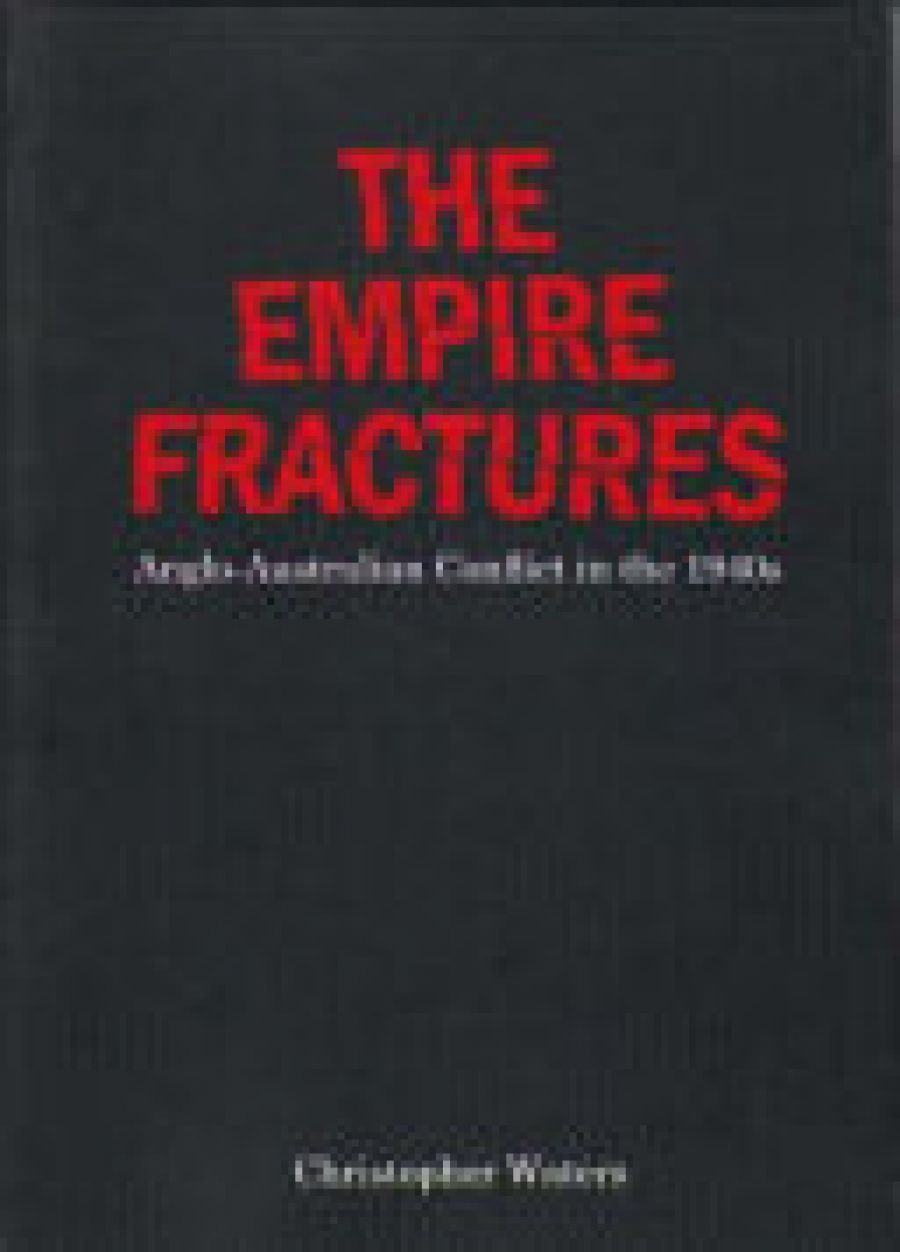
- Free Article: No
- Contents Category: Politics
- Review Article: Yes
- Article Title: Fractured Empire
- Online Only: No
- Custom Highlight Text:
The central contention of this provocative, well-written, and extensively researched study is that Australia underwent a process of decolonisation during the 1940s, and that only by understanding this can we make sense of the subsequent relationships between Australia, Britain and the United States.
- Book 1 Title: The Empire Fractures
- Book 1 Subtitle: Anglo-Australian Conflict in the 1940s
- Book 1 Biblio: Australian Scholarly Publishing, $34.95 pb, 269 pp
The tensions between Canberra and London were exemplified perfectly in the approach each took to the United Nations. The British viewed the world in terms of realpolitik and the traditional behaviour of great powers. Australia, guided by H. V. Evatt at his brilliant, impassioned and thoroughly erratic best, wanted the United Nations to function as a juridical body, before which every member would have an equal vote and equal say. Evatt referred regularly to the ‘principles of justice’ which he felt should guide the deliberations of the international body and, by extension, relations between states. In this he was both idealistic, and hopelessly unrealistic.
The problem for Australia was twofold. On the one hand, the British were not keen to allow the unguided missile of Evatt’s rhetoric to be seen as representative of the overall British Commonwealth position. In this they were helped by the other great powers, the United States and Soviet Union, which did not recognise the claims of minor powers to be consulted during the deliberations of the great. But any chance of acceptance which Evatt’s conception of the conduct of foreign affairs might have had in other circumstances was forestalled by the growing discord between East and West and the rapid emergence of the Cold War. Evatt’ s handling of this, again, was unrealistic at best. The strain of liberal internationalist thought which Evatt espoused, and which was represented even more clearly by the young Secretary of the Department of External Affairs, J.W. Burton, was rendered largely irrelevant by events in the wider world over which Australia had neither control, nor even influence. Evatt’s reading of Soviet policy, and of Stalin, was simply wrong, and the Australian government’s criticisms of Britain’s increasingly anti-Soviet stance led to further strains in the AngloAustralian relationship. Waters usefully reminds us that a concentration on Evatt, and the difficult personal relations which were seemingly a hallmark of his time in ministerial office, is insufficient by itself to explain the disharmony which marked Commonwealth relations in this period. Rather, he points to a ‘fracturing’ of the British imperial state in Australia, and a fundamental change in the AngloDominion relationship which was to a considerable extent a product of the Pacific war. Labor’s tenure of office in this period ‘represented a major upheaval in the political terrain’, he notes, just as the period of the Attlee government marked a similar shift in Britain. Evatt’s ability to formulate policy at the highest levels is only explicable if this broader context is taken into account.
After 1945, Labour in Britain looked to the empire to assist in the modernisation and reform of that country; increasingly for the dominions, however, the time for that had passed. The change of government in Australia after 1949 saw some attempts to revive a commonality of purpose between Britain and Australia, but the increasing importance of the US in Australian affairs and the profundity of the changes wrought after 1941 meant the relationship could never be the same again.
This is a model scholarly monograph with something to say to a wider readership. Discussion of our constitutional arrangements is certain to increase over the next several years, and such debate will benefit greatly from being grounded firmly in the historical record; we need less shrillness and passion and more carefully considered argument of the kind which Waters here deploys. The leader of the British Labour Party, Tony Blair, might also ponder, on his next visit to these shores, whether there really is a direct and easy transference of assumptions and methods between kindred political parties. The answer, on the basis of this book, might not give him much comfort.


Comments powered by CComment